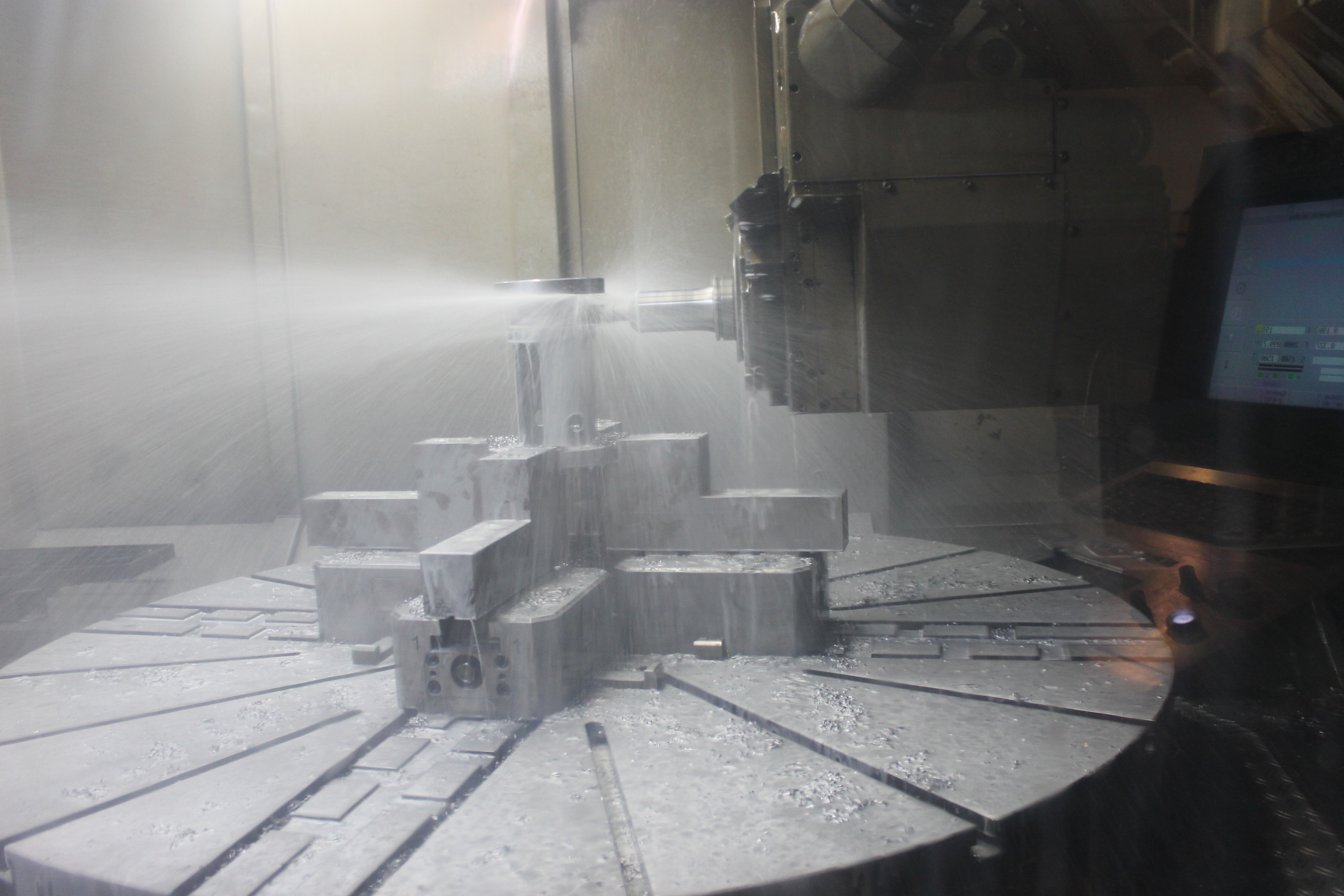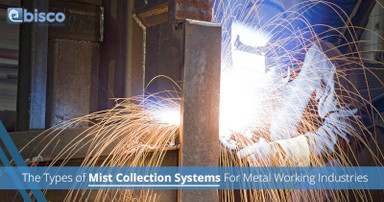May 5th 2017
The Types of Mist Collection Systems for Metal Working Industries
For more than 50 years, metalworking companies have been utilizing mist collectors on their operational machines for a variety of reasons. Mist collectors not only help provide clean air for employees, they can help to reduce the adverse effects of exposure to metalworking fluids, reduce maintenance costs and even improve production quality. At Bisco Enterprise, we’re proud to be a leading provider of quality mist collectors for those in the metalworking industry. If you currently utilize a mist collector at your workplace, or you’re considering installing a mist collection system in your facility, they can help keep your shop safe, clean and productive.
The Problem With Mist
If you work in the metalworking field, you may already know that repeated exposure to mist and smoke from metalworking fluids through oral ingestion, dermal contact and inhalation can be very carcinogenic. A handful of government agencies and organizations such as the Occupational Safety and Health Administration (OSHA) have developed recommendations and laws to govern the maximum exposure to airborne concentrations of various mists, oils, greases and lubricants. Since the OSHA standards are enforced by law, it’s critical for businesses to abide their standard for the airborne concentration of metalworking fluids.
The Goals of Mist Collectors
The main objective of mist collection is to prevent mist from becoming airborne so workers are free of inhaling mist-laden air. Most mist collection specialists will tell you that by containing the mist within a metal or plexiglass machine enclosure, you can successfully filter polluted air through a mist collector without having to worry about air pollution and employee safety. If you currently have a mist collection system, but you feel it isn’t operating at the efficiency it used to, a few things may be occurring.
- Too much mist is being pulled into the mist collector, limiting the proper cooling and lubrication techniques of the machine.
- Your mist collector may be collection so much mist that it cannot filter contaminants fast enough. This can require frequent filter changes as well.
- Mist is escaping through the machine’s door, chop conveyors, or other openings.
If you’re ready to upgrade your current mist collection system to a new and efficient model, contact the mist collection specialists at Bisco Enterprise today. With more than 40 years of experience in clean air systems, we can help you choose the best industrial mist collection for your business.

Types of Mist Collectors
Once a metalworking shop has determined its specific airflow needs, it can choose from a variety of mist collection systems to install. Some of these mist collection alternatives may include:
- A machine mounted mist collector
- Single ducted mist collectors
- Cellular mist collector system
- Central mist collector for up to 20 machining centers
- Ambient mist filtration
Machine Mounted Mist Collector
A machine mounted mist collector is among the most popular and practical solutions for many metalworking companies. Some advantages of this type of mist collector may include:
- The flexibility to move the machine easily when manufacturing operations change
- Little to no floor space required
- Oil and coolant is returned to the machining center
- Simple upkeep and maintenance
- Some disadvantages of a machine mounted mist collector may include:
- High energy usage
- Each machine requires a motor starter
- Multiple machines require multiple collectors
Single Ducted Mist Collector
A single ducted mist collector can be mounted on the floor, hung on the ceiling or mounted to a beam. As the second most common type of mist collection system, these are typically used when machine mounting is not an option. Some advantages of this type of mist collector may include:
- The flexibility to move the machining center when operations change Little to no maintenance required
- Only one machine is without mist collection during mist collector maintenance
Some disadvantages of a single ducted mist collector may include:
- Each mist collector machine requires a motor starter
- Multiple machines require multiple connectors
- High energy usage
Ducted Cellular Mist Collection System
A ducted cellular mist collection system uses a single mist collector for a machining cell with two to four machining centers. These machines typically use the same oil or coolant, and in most cases installing one mist collector for the machining cell may be more practical than using individual collectors. Some advantages of this type of mist collection system may include:
- The mist collector will only operate when the machining cell is operating Energy usage is minimized by using fewer collectors
- Collected mist can be returned to the coolant filtration system of one machine
Some disadvantages of a ducted cellular mist collection system may include:
- In order to minimize the risk of leaks, ducting must be installed properly
- Balancing airflow between all machines can be tricky to achieve
Ducted Central Mist Collection System
A ducted central mist collection system uses a single mist collector that is ducted to up to 20 machine tools. While these larger mist collection systems were popular in the past, they are no longer as common due to their disadvantages. Some advantages of this type of mist collection system may include:
- A low cost mist collection solution with one collector for many machines
- Speedy installation with a single fan and single motor
- Maintenance is only required to change out filters
Some disadvantages of a ducted cellular mist collection system may include:
- Requires a large amount of floor space
- Installation costs may be high due to more ducting
- When the mist collection system is down or maintenance is required, most or all of your plant’s mist collection systems will be shut down
- Balancing airflow between different machines can be extremely difficult
Ambient Mist Filtration System
An ambient mist filtration system is specifically designed to remove mist from general plant air without having to be connected to the mist source. Most often used in cases where mist filtration is used as a secondary system, an ambient mist filtration system may include the following benefits:
- This type of mist collection system can be used when there are several machines that have no enclosures
- They provide a high degree of air cleanliness
Some disadvantages of an ambient mist filtration system may include:
- Ambient systems typically have a maximum system efficiency of 70 percent, which may not be efficient enough to meet local, state or federal requirements
- In order for mist to be captured by the system, it must rise to the plant’s airflow pattern. This can mean that employees are still exposed to a high concentration of mist
Bisco Enterprise is proud to be an industry leader in air cleaning and dust collection products for a variety of industrial and manufacturing industries. If you’re interested in learning more about our array air cleaning products, contact us today!

